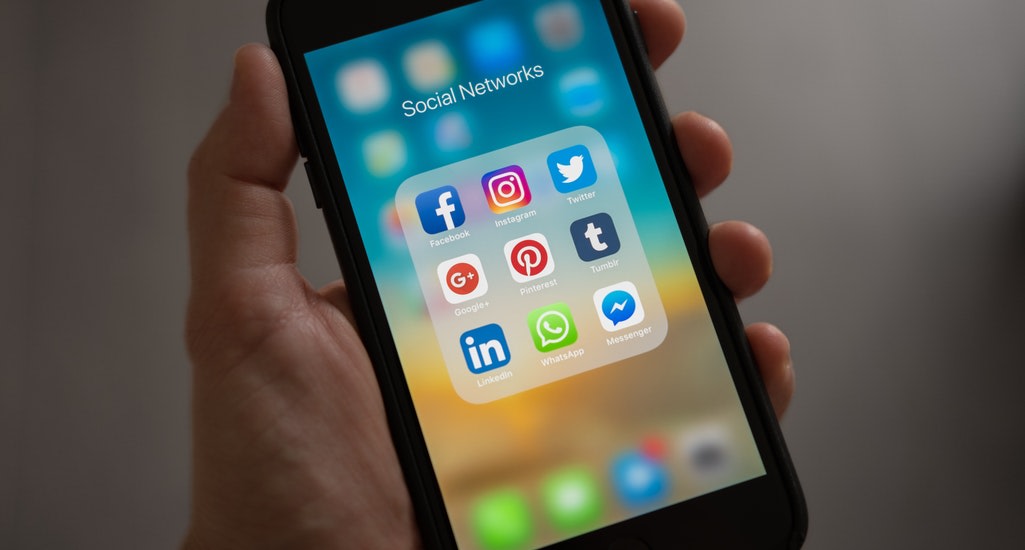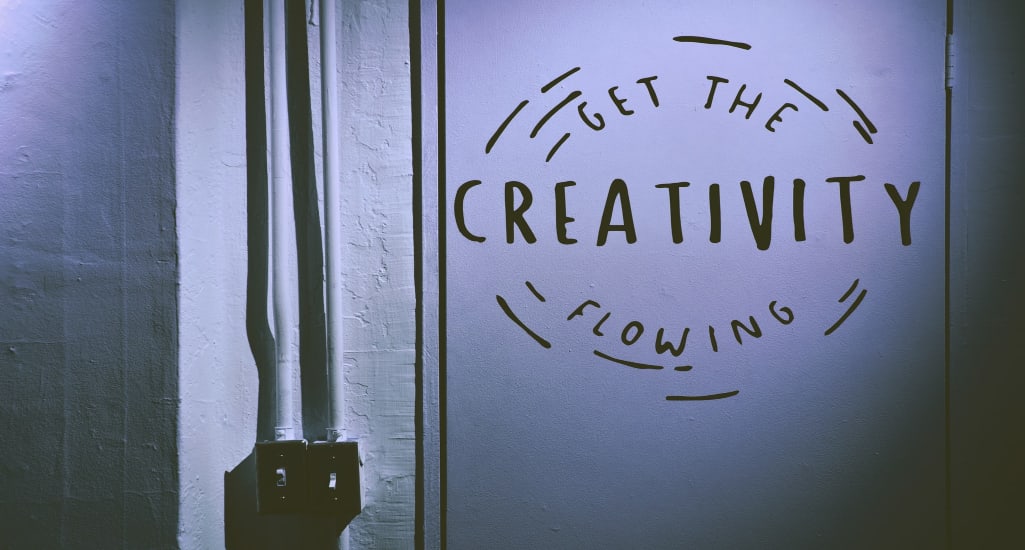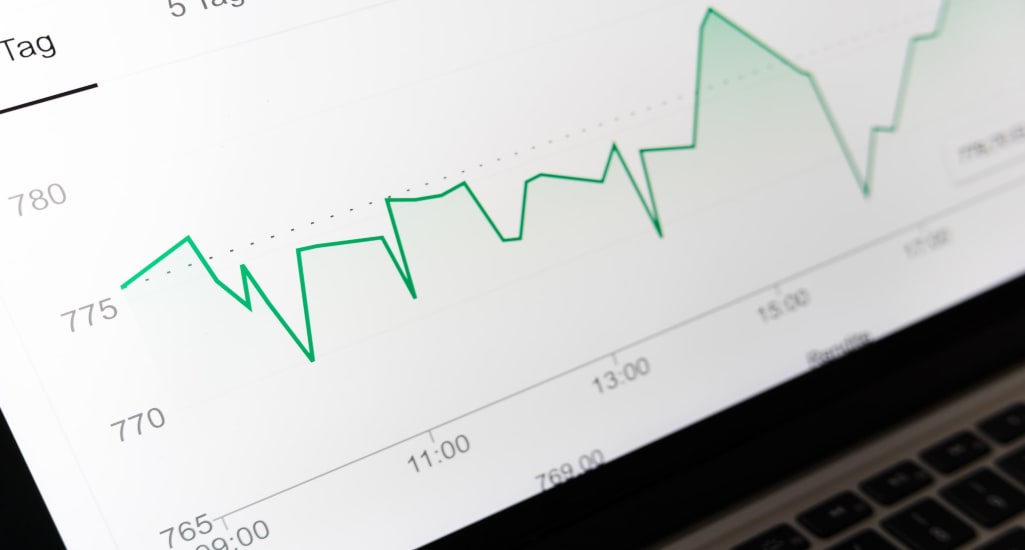Influencer marketing: How to get started in 2020
Written by Samantha Sherer on 34 minute read
Influencer marketing - you know it’s a huge industry.

It’s been embraced by both small and large companies, who have the vision to see how working with key influencers can build a brand. As a strategy, it’s evolving and growing and businesses not already investing some of their marketing budgets into this area could be missing a big trick.
But with an industry moving so fast, how do you get involved in the action? As a business, you may find it hard to know if influencer marketing is right for you. As an individual, you struggle to know how to get started building a career as an influencer. Where do you even begin?
Here at Awin, we have a wealth of experience in the influencer marketing sphere. We can guide both advertisers and publishers through the ins and outs with plentiful resources.
For advertisers:
- What is influencer marketing?
- What are influencers?
- What are the main advantages and benefits of this marketing strategy?
- Examples of influencer marketing campaigns
- Why businesses are investing in influencer marketing in 2020
- How to define an influencer marketing strategy
For publishers:
- Tips to get started with influencer marketing
- Recommended influencer marketing platforms to get you started
Almost everyone has a social media presence these days, therefore influencer marketing is an opportunity for any business or individual looking to more effectively utilize the online space.
What is influencer marketing?
Your social feed is full of posts showing you how to become healthier, earn a better income, have a better relationship. Your emails are from bloggers or online business owners you admire, recommending products or services that they know will be of benefit to you. Some of these posts and emails will hit home, and you will go on to make a purchase. When this happens, you have become part of the influencer marketing phenomenon.
As an idea, influencer marketing is not a new concept as it is based on the foundation of recommendations, referral or word-of-mouth advertising, which has long been in existence. Television advertising has used it to good effect by employing celebrities to endorse products. Now, however, influencer marketing is based on key individuals creating content that sparks conversation and a desire to purchase.
This desire is built on how the audience perceives the referrer or influencer. Successful influencers build a following based on great content that delivers knowledge and experience within their chosen field. Their audience not only enjoys their content but usually receives something of value along the way. This can be in the form of tips, tricks, new knowledge or just pure entertainment.
The audience respects and trusts the influencer, based on their experiences with them to date. For example, the influencer talks constantly about a book they have read and recommends their audience read it too. They read the book and love it too. Or perhaps the influencer records a video of a recipe, which is easy to follow and tastes great. Others try the recipe and it works so well that when the influencer publishes the next video their viewers can’t wait to try it.
When an influencer then shares new content discussing third-party brands or products, the market is already primed towards the influencer’s choices and much more likely to follow the recommendation. Surveys show that 70% of buyers take the recommendations of peers into account before purchasing, demonstrating the capacity of this form of marketing.

What are influencers?
“Influencers are people. People (or maybe personas) with a brand and an audience. What makes them attractive to advertisers is their ability to speak to a very defined group of fans. The way the ecosystem is maturing looks a lot like the internet in the early days” – Mike Schmidt, Founder Dovetale.
As the above quote points out, influencers are people, and this is the key aspect of influencer marketing. Gone are the days of bland press releases, TV ads that feature models that don’t represent a normal human being, or celebrities being paid to endorse a product.
Advertising mediums are changing, and influencer marketing has arisen in response. Consumers spend more time on social platforms and respond better to those they see as their peers. Influencer marketing targets audiences in the environments they spend time in and approach them on their level. Buyers of today look to each other for recommendations, rather than directly to companies.
What are the main advantages and benefits of this marketing strategy?
Finding methods that have the potential to create outstanding results without breaking the bank is key to marketing success. Influencer marketing not only fits this criteria but outshines many other forms of marketing in terms of ROI.
Influencer marketing is linked to the growth of social media, which has opened up new advertising channels to all types of businesses. With millions of people using the many social media platforms on offer, the potential audience is becoming one of the largest pools of lead generation.
Influencers have built up strong followings on social media, and are considered more instrumental and easy to relate to than the celebrities who endorse products across traditional media sources, such as TV, radio and magazines. Comparably, influencers are normal people who have built their businesses or social media presence by providing interesting and engaging content. As social media has developed, companies have been utilizing the influencer marketing model more to promote their own brands.
The proof of just how powerful influencer marketing has become is demonstrated by some compelling statistics and facts that are becoming more commonplace.
70% of teens trust social influencers more than celebrities
Young people have always listened to their peers and consider influencers to be a part of their peer group. Although they may idolize sporting and TV celebrities from afar, they understand that famous personalities are not a part of their own lives. They may aspire to be like them, but they appreciate them more as fantasy figures.
The way they perceive influencers, however, is different. They connect and engage with influencers on social media as if they were friends, particularly those who come from similar backgrounds. Influencers talk about subjects that are close to teenagers’ hearts and teens can identify with them directly in a way they cannot with celebrities.
Teenagers feel they know the influencers and because of this, they trust them and their opinions. When an influencer gives them advice they follow it. Consider that 70% of YouTube subscribers are more in tune with influencers than celebrities, and 40% go as far as to say that their favorite YouTube creators ‘understand them better than their friends’ and you will start to appreciate the bond that teenagers have with social media influencers.
This comes down to the strong ties the influencers forge with their audience compared to the relationship these same viewers have with YouTube videos of celebrities. Influencer videos are watched more and get twice as much direct action (be it interaction, product purchases, etc) as a result of the video than those of traditional celebrities. Sixty percent of subscribers would happily act on the advice of these trendsetters rather than the advice of TV or film celebrities. These are powerful statistics that demonstrate the strength of influencer marketing, particularly when considering the impact on the upcoming generation of online shoppers.
Influencer marketing is more profitable than print marketing

Newspapers and magazines are now widely available online and are read more frequently on tablets and phones than ever before. This, in turn, has led to the slow decline of print marketing over the last few years. Marketers have naturally looked to other forms of promotion, in particular focusing on different methods of advertising online. However, the internet is a crowded marketplace and to be seen across the world wide web, brands have, by necessity, narrowed their target audience down in order to reach out and connect with better, more qualified potential leads.
This has led them to approach influencers who are already in front of their target audience, which resulted in influencer marketing overtaking print marketing for the first time in 2016. Consumers have gradually changed their own methods of purchasing and now seek out recommendations and reviews, trusting those from family, friends and social media influencers over traditional print ads. Purchasers are no longer simply convinced by companies extolling the virtues of their products; instead, they want social proof from people they have relationships with, including the authorities they follow online. With research showing that product reviews are 12x more trusted than sales pitches written directly by the brand, it’s clear to see why influencer marketing has become more profitable than print marketing.
Businesses make a 650% return for every $1 spent on influencer marketing
The return on investment for influencer marketing is estimated at $6.50 for every $1 spent, and in some cases, it has been reported to be as high as $20 or more. Not only is the return high but over 50% of marketers feel that customers gained through influencer marketing are better for their long-term business. They spend more money leading to higher average order values and are happy to share their experiences about the product or service as well, leading to second-tier customers gained indirectly as a result of the initial marketing campaign.
With influencer marketing perceived as the fastest-growing method of obtaining new customers, 59% of businesses intend to increase the budget on influencer marketing. It now beats paid search and organic search, and is considered the most cost-effective method of marketing by 22% of marketers for acquiring new customers, tying with email marketing for the top spot.
When looking at the most successful platform to use for influencer marketing, blogs take the lead, with 37% leveraging this method for promotional means. Consumers like to read content about a subject before committing to the purchase, so turn to blogs and articles to help them get a better understanding first. Regarding social media, 25% of marketers said they preferred Facebook, outstripping the collective preference for YouTube, Instagram, Twitter, Pinterest and other networks.
The influencer marketing industry will be worth $7.5billion in 2020
Although influencer marketing has been around for several years now, it is only in the last couple of years that it has experienced a major growth spurt. Thanks to the popularity of social media, influencers have a greater reach and their voice is heard more. Established companies and newcomers are looking to leverage the power of the social media reach through various platforms and devices; compare the search term volumes for influencer marketing today to three years ago and you will discover a three-fold increase, while the end of 2017 into 2018 saw a five-fold growth rate.
With such a strong growth rate, it’s no wonder that the industry is predicted to be worth $7.5billion in 2020. Ad-blocking is becoming an increasing issue for pop-up ads and traditional display advertising, and a large percentage of the population is spending more time scrolling social media on mobile devices rather than watching TV or reading magazines, meaning companies are continually looking for new advertising channels to explore.
86% of women use social media for purchasing advice

According to research, women like to find out more about potential purchases by speaking to others regarding their experiences first. Many turn to friends and family for their advice and a massive 86% use social media to help them with their decisions.
However, the women surveyed commented that they also have confidence in their own ability to make decisions and the majority said that they felt able to determine which information they read was trustworthy or not. So although they use social networks widely for social proof, they need to feel trust in the authority they are responding to. Instead of being susceptible to opinions from unknown people, they are more likely to listen to influencers they have built relationships with.
Although not restricted to the female audience, the fashion and beauty industry is a niche that relies deeply on influencer marketing, with 57% of companies using it as part of their marketing strategy. Traditionally, it's an area frequented by women looking for tips and advice. Instead of asking for a friend’s recommendation, women are now seeking help from their favorite influencers online to discover the perfect product for them.
Examples of influencer marketing campaigns
As experts in the social sphere, getting influencers to utilize social media platforms like Instagram stories, shoppable posts and swipe-ups in their campaigns (rather than just focusing on blog posts) is a key way to drive sales beyond traditional affiliate links and tracking methods.
With consumers swiping up on Instagram stories to shop the looks of their favorite style bloggers and social media influencers, these once-untraditional marketing avenues are increasingly becoming the norm for shoppers on the go.
With Instagram introducing functionality like shoppable posts and swipe-ups, the entire purchasing journey can now be taken in-platform, which means affiliate marketers can no longer ignore the power of social networks. Influencers allow brands to take advantage of all the benefits of affiliate marketing, including transparency and guaranteed exposure, while adding the power to connect with shoppers and strengthen brand affinity.
As a sub-network on Awin, Shopping Links can help you seamlessly set up a collaboration and track your influencer campaigns over time with a focus on data-driven results. To learn more about a partnership with Shopping Links or other influencer sub-networks on Awin, please contact your account manager or our publisher management team.
Fashion influencers
The fashion world is arguably the sector where bloggers wield the most persuasive power and influence, with the rise of the fashion blogger starting from humble beginnings in the mid 2000s.
Today, fashion blogging has become a fully-fledged business, with top fashionistas accumulating millions of followers on social media and serious power as trusted tastemakers.
The Blonde Salad began her influencer marketing journey back in 2009 and is now seen as one of the world’s best fashion influencers. Account owner Chiara Ferragni’s 15.8 million person-strong following has developed The Blonde Salad into a brand of its own. Reportedly worth $8million Chiara has now worked with brands such as Pantene and has been the face of Lancôme. From this success she also managed to release her own shoe line.
Stephanie Hill of The Style Bungalow is another example of a top influencer who has grown her audience based on her love of affordable fashion finds and a distinct personal aesthetic. The Miami-based blogger is making her mark in the industry with her vintage-inspired tropical style that has earned her a major following from females aged 25-34. With 162,500 followers, Hill boasts a considerably smaller following than others, but she remains a top influencer in the fashion industry because of the targeted audience she reaches. With over 70% of her audience based in the US, Hill is a top personality for brands looking to tap into this highly sought-after demographic.
Lifestyle and mom influencers

From baby bumps to chic interior styling, lifestyle bloggers tap into the aspirational dreams of their audiences. Lifestyle influencers are especially persuasive because their follower demographics are so far-reaching. From food to interiors, babies to healthy living, lifestyle influencers aren’t just creating and marketing an aesthetic, but an all-encompassing way of life. Bloggers like Kyree Harvey of Miss Kyree Loves create content that speaks to a wide range of baby-loving mothers with a passion for interiors, beautiful design and family living.
Kyree is a high-performing Australian-based influencer because she consistently drives conversions for the brands she collaborates with. With a highly-engaged audience, Harvey drives sales and traffic through her swipe-ups, blog post features and product reviews. Harvey also leverages personally-customized coupon codes to not only drive conversion but also make it easier to track and attribute the sales she makes across her multiple social platforms.
Nashville-based influencer Natasha Stoneking is another top lifestyle blogger who reaches millions of highly-targeted consumers each month. With an audience that’s 97% based in the US (a rare find!) and primarily composed of females aged 25-35 living in Nashville, Atlanta and Houston, Stoneking offers brands the opportunity to tap into her unique brand of southern charm to drive sales in these key demographics.
Micro-influencers
For brands looking to engage a lasting brand ambassador on a budget, micro-influencers can provide a highly-engaged, loyal and niche audience for a fraction of the cost of high-profile influencers. The definition of a micro-influencer will differ depending on who you’re talking to, but as a general rule, micro-influencers have between 2k - 80k followers and have highly-targeted, niche audiences. You’ll be able to find lots of examples of this style of marketing, as brands adopt it more heavily as an affordable strategy.
Where mega influencers and celebrity endorsements are often expensive and disconnected from their audiences, micro-influencers offer high engagement from focused and responsive followers. In fact, micro-influencers with 1,000-10,000 followers can attract more than four times the engagement on sponsored posts because of their loyal following.
Fashion micro-influencers like Kelly Saks offer brands an accessible, reasonably-priced way to test the waters of an influencer collaboration. Saks is a Miami-based blogger that shares her fashion and lifestyle finds with a highly engaged audience that attracts leading brands like Marks & Spencer. Saks speaks to an audience that’s highly-targeted and localized: two of her top three follower locations are Miami and Miami Beach, making her a valuable ambassador for brands looking to launch in this market. Thanks to her niche, localized following, micro-influencers like Saks represent real customers - engaging her in collaborations is the closest brands can get to word-of-mouth marketing.
While micro-influencers are more accessible and widespread than high-profile bloggers, you also have to work with them more to often see the same level of reach and impressions as you would a mid- to high-tier influencer. This makes them the perfect choice to engage as lasting, long-term brand ambassadors rather than the source of one-off influencer campaigns.
Why businesses are investing in influencer marketing in 2020
Trust in your brand
With the internet now a more crowded marketplace than ever, finding ways to make your own brand stand out is crucial to long-term success. Positive exposure from a respected voice helps to build trust in your brand, which makes consumers not only sit up and take notice but remember you longer.
According to a Nielsen survey, 92% of consumers trust ‘earned’ media, word-of-mouth or recommendations from family and friends as opposed to other types of advertising. Influencer marketing is a referral form of advertising and goes a long way towards building long-term trust.
Your target audience

One aspect of influencer marketing that makes it so exciting for brands is its ability to put products right in front of a warmed up target audience. Investing research into finding the best influencer to recommend your brand results in your products being exposed to an audience who is already open to your type of products or industry.
Targeting not only the right audience but also a warm audience can have a big effect on your bottom line. Pitching an ice cooler to an Eskimo may not be the most effective strategy but approaching an avid audience of summer campers looking for ways to make their camping experience even better could see your profits double. Building a relationship with one key person in this area could see your product exposed to thousands more.
Improve your SEO
Although influencer marketing is an effective standalone sales pitch, it also has the bonus of aiding your SEO and in turn boosting your search rankings. The more influencers that are discussing your products, the more your brand awareness increases. This positively affects your SEO in a few key ways:
- Lots of fresh content about your brand and your product, increasing visibility, awareness and engagement
- An increased chance of sharing of your posts, links, and content that mentions your product. As your company or product name is mentioned more and more across social channels, Google will rate your popularity by pushing you up the rankings, which is the ultimate aim of search engine optimization
Accelerated growth rate
Marketing is not cheap and takes time and effort to plan, monitor, track and tweak. Getting customers is only half of the battle, as keeping them is equally important. Influencer marketing creates twice as many sales as display advertising, and the retention rate is 37% higher, supporting that influencer marketing not only captures new customers but keeps them too.
The growth rate of influencer marketing is also outstripping other forms of marketing. A test program by Silk Almond Milk showed that it creates as much as 11 times the ROI as banner ads. Committing chunks of your marketing budget to influencer marketing creates a return not seen elsewhere.
Hanging out on social media
Consumers have changed. They are now more likely to browse Facebook or Instagram than the ads section of their local newspaper, usually on a mobile platform. Advertising methods need to move with the times or face being left behind, and the popularity and growth of influencer marketing show how this shift is already happening.
Getting your brand exposed through social platforms is now a key aspect of building your brand, and influencer marketing contributes to this exposure in a big way. In 2017 it was reported that 12.9 million brand-sponsored influencer posts were published on Instagram alone, and it has continued to grow. We’ve seen the Federal Trade Commission increase guidance for influencers and brands around the visibility of ads and paid partnerships.
Produces content

Content has been hailed as king for a long time online, although now content is not just available in the written form. Online users love fresh content and avidly read articles or watch videos created by their favorite bloggers. Influencers are very good at producing content and if they focus on your brand, you can then use it (with permission). Not only is the content being digested by the influencer’s audience but will also help with your own ranking and popularity.
This content also provides opportunities for the future to repost, share and deploy, helping to keep your product and brand alive for much longer than it would from a different type of advertising. Influencers also often perceive brands from a new perspective and provide fresh and interesting content.
Cost-effective
If the ROI is good, the cost of an advertising campaign is not necessarily the first thing to consider. But the good news with influencer marketing is, not only does it give a good ROI, but it is a relatively inexpensive method to set up, compared to other forms of advertising.
On average, for every $1 spent on influencer marketing, the revenue created is worth 6.5%. Compare this to PPC, where every $1.60 makes $3, plus, the viewing time is about seven times longer for content produced by influencers.
The actual cost of influencer marketing depends very much on the influencer, as some require payments, some take goods or gifts in return and some don’t charge at all. PPC, however, can reach into the thousands per month for management fees, plus the cost of the clicks is then charged on top.
How to define an influencer marketing strategy
Be very clear about your campaign goals
As with any other form of marketing, success only comes if you are clear about what you are trying to do, with clear outcomes of what you are hoping for. There is no substitute for a sensible, cohesive strategy.
All successful influencer marketing campaigns share three things in common, which need to be in place at the beginning of the campaign:
- A clearly identified target audience
- Clearly defined budget parameters
- Key Performance Indicators (KPIs) set
Identify the right influencer and the right social media platforms
The influencer you select will be the public face of your brand on social media, so before you commit to working with any influencer ask yourself, “Is this the right face for my company?” You need to do thorough research before working with an influencer.
Do your homework across all their social media profiles. Verify that they have a good reputation online and in the media. Ensure they don’t discuss issues that conflict with the intrinsic values of your products or services and confirm they are polite, articulate, and that their posts are well researched and accurate.
Never solely base your decision exclusively on your potential influencer’s number of followers. Micro-influencers with small but engaged followers can be every bit as effective as some of the more “mass” influencers and can be cheaper.
Similarly, not all influencers are created equal. Be sure you have the right influencer for your brand and your strategy. In 2017, CEO World identified 16 different types of influencer:
- The celebrity
- The disruptor
- The authority
- The analyst
- The connector
- The insider
- The opinion leader
- The social butterfly
- The brand advocate
- The discoverer
- The activist
- The expert
- The biased
- The trendsetter
- The journalist
- The sharer
Each type plays a different role in delivering a social media strategy. Be sure to understand exactly where your influencer’s personal style intersects with your strategy and your brand personality.
Once you have a feel for what type of influencer best suits your needs, you need to ensure the platform(s) your influencer has their strongest following on aligns with your end outcomes. Each social media platform performs differently in its approach to reaching specific audiences and demographics. If your strategy and brand lend itself to engaging visual images then Instagram may be your best platform, while videos may perform better on Facebook. Choosing the right social media channel will allow you to fine tune your prospect and customer targeting.
Similarly, you may also wish to reflect on the form of engagement you are looking to achieve. Social media channels each offer different advantages and engagement opportunities. Hence, a successful Facebook campaign may not receive the same love on Instagram, Twitter or Pinterest.
Awin can offer a wealth of insight and in-depth information on the influencers we work with across the network, and how best to work with certain influencers if you have some particular in mind. If your brand is considering influencer marketing, get in contact with our publisher management team who will be able to help you get started.
Hone in on engagement rates
Follower counts are not necessarily the most important statistic in the world of influencer marketing. There are many examples of identical campaigns run on multiple Instagram influencer accounts where the accounts with fewer than 30,000 followers outperformed accounts with 5 million+ followers by a factor of nearly 300%.
Zero in on the engagement rates and the type of engagement posts received. For example, a large proportion of the audience following international models with millions of followers simply aren’t interested in buying the products or services they promote. They are more interested in the celebrity rather than their endorsements.
Include micro-influencers in your strategy
Micro-influencers can represent an influencer marketing campaign’s sweet spot. They are a great way of expanding your campaign’s reach across multiple influencer accounts without burning your budget. Not only is this an intelligent way to manage risk but also micro-influencer followers often prove to be more engaged and more open to buying the products and services being promoted through the micro-influencers content.
Price is always a thing
Influencers prices can vary, and often depend on the status and reach of the influencer. Of course there is always room to negotiate on price, but costs should always be viewed in terms of return on investment and take into account the specific KPIs you are looking to achieve. The results achieved by influencer marketing can be far reaching, outstripping other forms of marketing, including many digital channels.
Busy and successful influencers may not consider a negotiation on price; however, many influencers also work on the premise of offering their own audience great products and services. If the influencer falls in love with your product, they may be happy to strike a mutually-acceptable deal.
Regardless of cost, influencer marketing is worth it. Overall, it is a much lower investment than other forms of marketing with a much larger return on investment.
Allow your influencers creative latitude
Influencers usually build their devoted following thanks to their personality, which has helped make them popular and drives their follower engagement. It’s important for the success of your campaign that you allow them to exercise creative control when promoting your product or service.
What you think might work may not resonate with their audience. Influencers continuously engage with their audience so they understand what they will respond to and what they won’t.
Brands that are brave enough to allow some aspect of control or input into the campaign’s creative direction inevitably end up with a more organic, authentic feeling post and consequently a better end result for your brand.
Posts are not infomercials
Consumers don’t like being constantly sold to, so posts should offer genuine value. Influencer posts need to retain their authenticity while promoting the emotional attributes of your brand, rather than trying to cram in all of the amazing benefits of your product or service. However, it is essential that influencers also make it extremely clear to their followers if the partnership has been paid, or sponsored, or items gifted, etc., to ensure that users are given a transparent view on the nature of the post. This is also known as influencer disclosure.
You want your influencer to channel their personal vibe into your campaign. After all, your brand is piggybacking on your influencer’s credibility so your post needs to organically reflect that.
When you partner with the right influencer and a social media platform sympathetic to your brand’s personality, sometimes it’s all about the organic ecosystem. A picture of your influencer with or using your product in a natural setting could be all you need.
Campaign results always spike when the audience arrives at the message under their own steam.
Structure a publishing calendar
Every influencer campaign proves far more effective when it is coordinated across your mix of social media channels and aligned with your other marketing initiatives, whether that be new blog posts, events, media releases, or lead magnets.
Placing your influencer marketing campaign at the heart of your marketing strategy is an effective path to guiding your audience and potential leads through your sales pipeline.
Review content prior to publishing
This is where you need to pull off a delicate balancing act. Giving your influencer creative latitude while still adhering to your brand personality can be risky. Before pulling the trigger and publishing your influencer’s posts, you need to ensure their content is in harmony with your campaign’s objectives. Empower your influencer creatively while retaining an editorial review process that covers all posts, images, and videos prior to publication.
Continuous tracking and measurement
This is the uncreative but worthy part of the influencer action. One of the benefits of social media driven marketing is the deluge of data and diagnostics that comes with it. You need to define what success looks like for your influencer campaign. Sadly, the number of likes or comments an individual post receives may not be a true reflection of a successful campaign.
Delve into the depths of your website analytics and review your referral traffic to see if you notice a spike from the social networks your influencer is posting on. Did you see a surge increase in leads or sales? Did your own social profiles see an increase in followers and their engagement levels? Are your sales numbers soaring? These are all questions you need to be in a position to answer.

Working with influencers through the Awin network also allows a further layer of visibility and tracking, which can better showcase the performance of any campaign. Using standard tracking links for your program, coupon attribution or click references, as agreed with the influencer, can give you real-time reporting on a granular level as to how your campaign is performing. Clicks, transactions and assists will be visible within the Awin interface, showing the direct results of traffic and interactions with an influencer’s postings, as well as any touchpoints the influencer may have driven to your website.
Getting started with influencer marketing as a publisher
We’ve covered the basics for getting started in influencer marketing as an advertiser but it can be a different ball game as a publisher. Though it’s important to understand the industry from an advertiser’s perspective, our Awin tips to get you started as an individual hoping to succeed at influencer marketing are slightly different.
Tips to get started with influencer marketing
Find your niche
As with any good affiliate marketer, you must be able to define your niche. It is true that influencer marketing is a crowded market out there. Therefore, you must be able to find a niche audience you can connect with to succeed. You may think that by targeting a smaller niche you will be limiting your sales opportunities, but studies have found the opposite to be true. The more targeted the niche, the more connected your audience will feel and the more likely they will make a purchase from you.
Research your platforms
There are an abundance of platforms available to you for influencer marketing, from social media to website styles and many more. In the beginning we recommend not trying to master them all at once. Find one or two that fit your brand, niche and creative style to create content for. Otherwise you can easily become disengaged with the creative process. If you’re uncertain, ensure you speak with your affiliate network, like Awin, to assist you in your decision making.
Build your audience
Don’t immediately start reaching out to advertisers and pushing paid products as soon as you start a profile on any platform. You should begin by planning out your content ideas and creating consistently to build audience rapport before you attempt to make any sales. Trust is vital in influencer marketing and trust can take time.
It’s a marathon not a sprint
It’s important to remember that your goals should be long term, and it’s rare there is a short path to success. Consistently creating content of value to your audience will forge a far better path than those who tell you you’ll become rich while you sleep.
Connect with thousands of advertisers quickly
The affiliate and influencer industry has grown substantially since its inception, and with 63% of marketers saying that they intend to increase spend across the channel in a 2019 survey by The Influencer Marketing Hub, it’s safe to assume that trend will continue. It is now possible to find influencer programs for most household brands and smaller retailers across all sectors. By joining an affiliate network - or networks - a publisher instantly has access to thousands of advertisers, whom you can contact and discuss opportunities and features with through a range of mediums. Networks aim to facilitate these relationships and make communication, optimization and promotion for affiliates and influencers as simple and easy as possible.
Recommended influencer marketing platforms to get you started
With over 14,600 advertisers on our network globally and 20 years of affiliate experience, Awin is ready to help influencers take that first step into the world of affiliate marketing.
The Awin platform makes it easy for you to create tracking links that can then be added to your influencer channels and performance KPIs like clicks, conversion rate, number of sales and commissions, which are all easily accessible in your publisher account. Within your publisher account you’ll also gain access to key promotions from retailers, banners and creative imagery, as well as any offer messaging or coupon codes that are available to promote.
To get started, simply create an account with Awin. Once you’ve been approved onto the network, select those advertisers you’d like to work with from our Advertiser & Product Directory. Each advertiser will have slightly different criteria to join their program, therefore we advise to fill in your affiliate profile as much as possible to showcase your platform and offering. Once you’ve been approved to each advertiser’s program, you can begin to promote using tracking links.
A final word
The growth of the internet has led to brands seeking new ways to promote their products or services, leading to adaptations across their advertising campaigns. Consumers have become more aware of the sales process, as well as having more choice. As a result, businesses have had to work hard to build relationships with potential consumers through content marketing, email marketing and, lastly, by developing an influencer marketing strategy.
It's easy to see why brands are adopting influencer marketing as a campaign weapon of choice to overcome the declining efficiency of traditional advertising and to forge ahead of their competition.
Through authenticity and inventive, insightful content, coupled with a deep understanding of their audience, influencers help brands extend their reach globally by engaging their target audience with minimal costs. Remember influencer marketing has its roots in social media and it is as much about creating arresting social engagement as it is about promoting a brand’s features and benefits.
You can also see why so many people are signing up to become influencers and build rapport with their online audiences. No matter whether those audiences are pre-existing or built from scratch, there are quality relationships to be fostered which can benefit the advertisers, the influencer and the final consumer.
